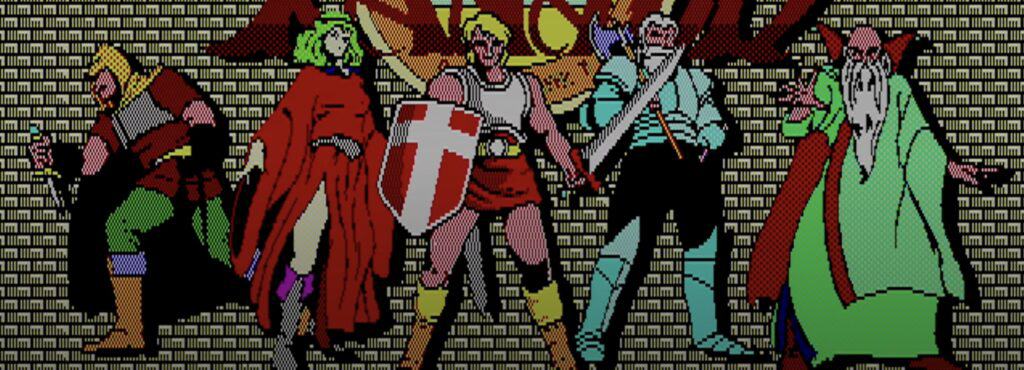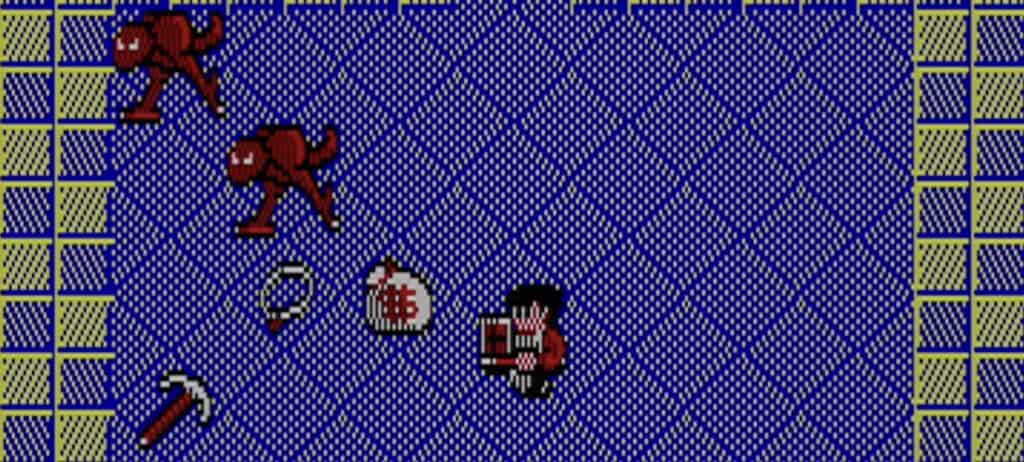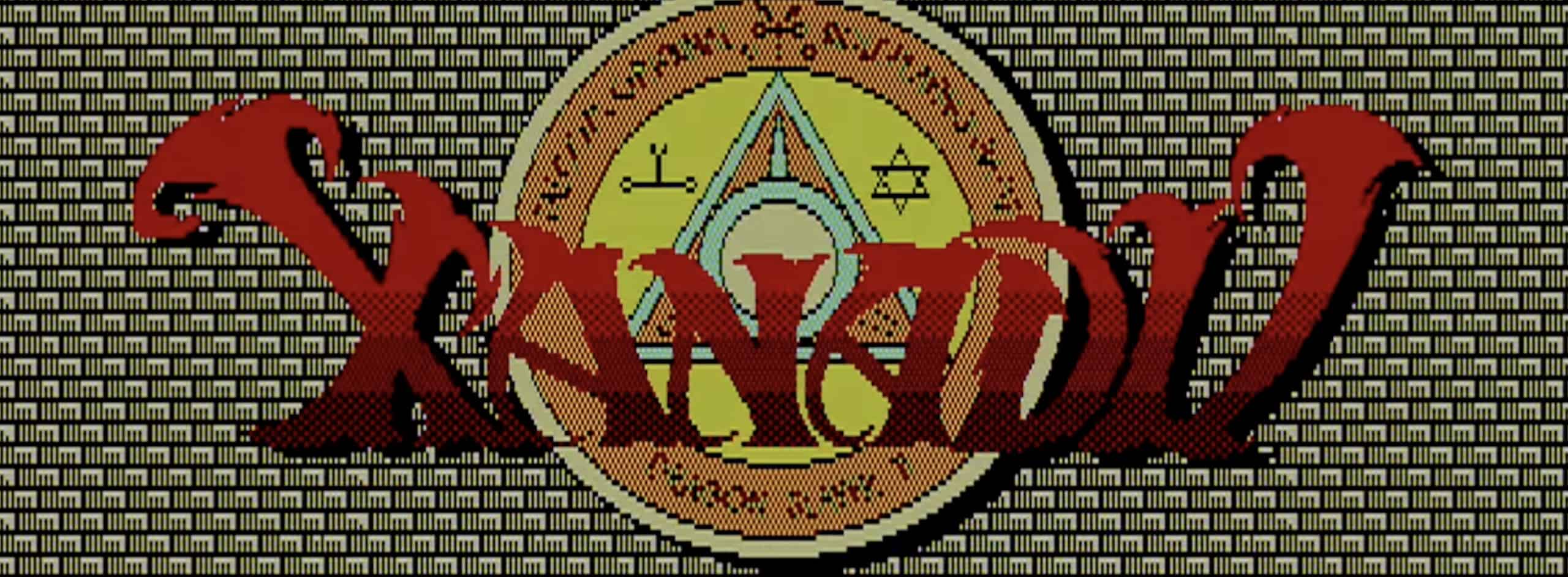Xanadu (also called Xanadu: Dragon Slayer II) is a 1985 action role-playing video game developed and published by Nihon Falcom. Originally, Xanadu was created for the PC-8801, X1, PC-8001, PC-9801, FM-7, and MSX computers. The game eventually received a few “enhanced remakes” for the Sega Saturn, PC-9801, and Windows. Xanadu follows Dragon Slayer and is the second game in the Dragon Slayer series. Although the Dragon Slayer series has more than half a dozen games in the franchise, most of the entries have nothing to do with one another.
Today, this game can be tricky to get ahold of. If players simply search “Xanadu“, a Steam link will pop up. This takes players to the page for Xanadu Next, a 2005 spin-off of the original game. While Xanadu Next is highly rated and available on Steam, it’s not the original 1985 game. The Nintendo eShop released the Eggconsole Xanadu PC-8801 PC-8801mkIISR version of the game for the Nintendo Switch in December 2023. Players can pick it up for $6.49.
Fortunately, there are also a few websites where players can download Xanadu for free. My Abandonware is probably the safest place to download the game, but it’s also available on other websites like Old Games Download. Players should always look into their sources before downloading any files, but My Abandonware is a popular pick for classic games. Players can also find other retro video games like Finders Keepers and the Temple of Apshai Trilogy on My Abandonware.
When Xanadu was released in Japan, it set a record for computer game sales. In 1985, Xanadu sold over 400,000 copies just in Japan and it’s considered one of the founders of the action role-playing video game subgenre. Unlike many other games of the time, Xanadu featured character stats, real-time action combat, and innovative gameplay. Xanadu also shows off one of the earliest examples of a video game expansion with Xanadu Scenario II’s release. As far as the game’s legacy goes, there’s no mistaking that Xanadu set the groundwork for many future games in and out of the Dragon Slayer franchise.
Xanadu Premise
Xanadu begins with the player taking control of the main character (MC) with no introduction or prologue. Once in control of the MC, the player needs to speak with the King. The King provides the MC with basic essentials and money for training. After this sequence happens, the player will get to choose which of MC’s attributes to increase. They also get to name their MC, making the character personal to them. Xanadu gives the player some control over how they want to build their MC, which has become a main staple in the role-playing game genre. The King tasks the MC with the quest of diving deep into the underground dungeons in search of the Dragon Slayer sword. With the sword, the MC should be able to kill Galsis, an evil dragon.
With the MC’s attributes ready and their equipment secure, the player needs to navigate the city to find their way into the underground complex. This is the first puzzle players will come across, emphasizing the puzzle and adventure game aspects. The game switches back and forth between a side-scrolling view and a top-down view. While exploring the world, players will be on a side-scrolling-style display. While in combat, they’ll be switched to a top-down perspective to better deal with the enemies. Xanadu combines a lot of gaming elements and play styles, including puzzle-solving, adventuring, platforming, and dungeon-crawling.
Where Xanadu shines is just how much Nihon Falcom managed to fit into the game. For the time, Xanadu was extremely advanced and allowed players to do things that other games couldn’t dream of. Some of these aspects include:
- An early example of real-time action combat
- A unique and semi-customizable character with full-fledged stats
- Innovative mechanics:
- Karma: Xanadu introduced a morality system that kept track of how good or bad the MC was
- Heavy puzzle-solving
- Effects for individual items equipped to the MC
- Each equipped item has its own level and needs to be leveled up through continued use
- Equipment can actually change the MC’s appearance
- Food collection that players need to keep on top of to keep the MC alive
- If the player runs out of food, the MC will lose HP, simulating them starving to death
- Long-range magic spell attacks
- Training facilities for players to level up specific desired stats
- Limited enemies in each area to prevent the player from grinding and powerleveling too early, guaranteeing the game will stay at a consistent difficulty
- Players need to be strategic when dealing with enemies so they can maximize experience points without risking their Karma score getting too high
- Purchasing and looting items
- Autosaving before a boss fight or leaving a building/area
- Players can use 100 gold to manually save the game as well, guaranteeing to keep their progress
Xanadu Main Characters

©Basement Brothers / Nihon Falcom – License
While Xanadu is much more involved than some other games of the 1980s, it still heavily focused on the gameplay. The plot of the game is intentionally kept simple. The player controls a magic-wielding warrior whom the King entrusts with a quest to find the Dragon Slayer sword. With the Dragon Slayer sword, they hope to kill the dragon, Galsis. The world is filled with non-player characters (NPCs), but they’re mostly there for decoration. The NPCs make the world feel fuller than it is. Players can’t speak to most of them. Once they get their equipment and assignment from the King, they don’t interact with many characters for any significant period.
The MC doesn’t have much of a backstory, though. That’s done intentionally because the MC is supposed to be the player’s character. The player gets to name the MC and level them up how they want to focus on specific types of gameplay. Xanadu is one of the earliest entries into the role-playing genre, which is known for its emphasis on letting the player create a character. Many players insert themselves into the MC or create an original character specifically for the game.
Xanadu Titles in the Series
Xanadu is the second game in the Dragon Slayer franchise. The main series ran from 1985 to 1995, with eight titles. Almost every game in the main series has at least one expansion. Since the Dragon Slayer franchise is one of the earliest examples of video game expansions, this guide will take a look at those as well. Since the main series’ conclusion, more Dragon Slayer and Xanadu games have emerged from the woodwork, proving that the franchise still has massive interest today.
The Main Dragon Slayer Series:
- Dragon Slayer (1984)
- Dragon Slayer Gaiden (1992)
- Xanadu (1985) – This game is commonly referred to as Dragon Slayer II: Xanadu.
- Xanadu Scenario II (1986)
- Faxanadu (1987)
- Dragon Slayer Jr: Romancia (1986)
- Legacy of the Wizard (July 17, 1987) – This game is commonly referred to as Dragon Slayer IV: Drasle Family.
- Sorcerian (1987)
- Sorcerian Additional Scenario Vol. 1 (1988)
- Sorcerian System Utility Vol.1 (1988)
- Sorcerian Additional Scenario Vol. 2: Sengoku Sorcerian (1988)
- Sorcerian Additional Scenario Vol. 3: Pyramid Sorcerian (1988)
- Sorcerian System New Scenario Vol.1: Uchuu kara no Houmonsa (1989)
- Selected Sorcerian 1 (1989)
- Selected Sorcerian 2 (1990)
- Selected Sorcerian 3 (1990)
- Selected Sorcerian 4 (1990)
- Selected Sorcerian 5 (1990)
- Gilgamesh Sorcerian (1990)
- Sorcerian (1990) – Sega Mega Drive version
- Sorcerian (1990) – PC-Engine version
- Dragon Slayer: The Legend of Heroes (1989)
- Dragon Slayer: The Legend of Heroes II (1992)
- Lord Monarch (1991)
- Lord Monarch Advanced (1991)
- Lord Monarch (1992) – Super Famicom version
- Lord Monarch: Tokoton Sentou Densetsu (1994)
- Lord Monarch Original (1996)
- Lord Monarch The First (1997)
- Lord Monarch Online (1997)
- Lord Monarch Pro (1997)
- Monarch Monarch (1998)
- Minna no Mona Mona (1999)
- Minna no Mona Mona 2 (1999)
- Minna no Mona Mona 3 (1999)
- Minna no Lord Monarch (1999)
- Minna no Lord Monarch 2 (1999)
- Minna no Lord Monarch 3 (1999)
- The Legend of Xanadu (1994)
- The Legend of Xanadu II (1995)
Other Dragon Slayer Remakes, Spin-Offs, & Titles:
- Revival Xanadu (1995)
- Revival Xanadu 2: Remix (1995)
- Sorcerian Forever (1997)
- Dragon Slayer Jr: Romancia ~Another Legend~ (1999)
- Sorcerian: Shichisei no Mahou no Shito (2000)
- Sorcerian Original (2000)
- Sorcerian Mobile (2003)
- Xanadu Next (2005)
- Sorcerian Online (2006)
- Advanced Sorcerian (2007)
- Sorcerian Complete (2010)
- Dragon Slayer: Michi Kareshi Houkan no Senshi-tachi (2012)
- Tokyo Xanadu (2015)
- Tokyo Xanadu eX+ (2016)
In 1988, Xanadu also received an OVA and a manga called Xanadu: The Legend of Dragon Slayer that coincided with the MSX version release.
Xanadu Cheats and Secret Unlocks

©Basement Brothers / Nihon Falcom – License
Developers often built cheat codes and other game exploits into their games in the 1980s and ’90s. While modern gamers are no strangers to cheat codes or taking advantage of glitches or other exploits, cheats aren’t the same as they used to be. Back in the day, having game-breaking cheats could make a practically unbeatable game manageable. Due to the lack of saving, the Game Over function that would kick a player back to the beginning of the game if they failed or ran out of lives, and several other factors, many classic games were extremely difficult without the use of cheats.
The Dragon Slayer franchise is one of the largest series to come out of the ’80s and ’90s. In fact, Faxanadu, an expansion/spin-off of Xanadu, has many cheats and passwords players can take advantage of. Sadly, Xanadu doesn’t seem to have the same offerings. There are a few cheats that players can take advantage of to make the game smoother, but not much else. The saving grace here is that since Xanadu features autosaving and manual saving mechanics, players don’t need to rely too heavily on cheats to get to the end.
Regain Energy Cheat Code (Cartridge Version)
- During battle or while outside, press F1 to pause the game
- Hold Shift
- Press G, R, 2
- When done correctly, players will get their energy back the next time an enemy hits the MC
Unlocking the Secret Shop
- Start the game
- Go to the right
- Go down the stairs
- Drop down the hole
- Take 5 steps left. The MC has moved far enough to the left when they can’t see the hole they came down anymore.
- With the hole no longer visible, go right
- The hole will be gone and, instead, the MC will stumble upon a hidden shop
Xanadu Cheats FAQ
How long to beat Xanadu?
According to HowLongToBeat.com, Xanadu’s main story will take about 34 hours to complete. If players want to complete the main story and all of the side quests, they’ll add about six hours onto that, for a grand total of 40 hours. Considering Xanadu came out in 1985, it’s a long game. Most other games that came out in the ’80s could be finished in a single sitting. Many of them needed to be finished in a single sitting because they had no way to save progress.
Is Tokyo Xanadu related to Xanadu?
Technically speaking, yes, Tokyo Xanadu (2015) and the “enhanced” 2016 version, Tokyo Xanadu eX+, are part of the Dragon Slayer series. Most of the Dragon Slayer games have little to nothing to do with one another, though. Tokyo Xanadu has a very different feel from Xanadu (1985) and Xanadu Next (2005). One of the things that makes Tokyo Xanadu stand out from the other Xanadu titles is the fact that it takes place in modern-day Tokyo and implements real-world technology, like cell phones.
The image featured at the top of this post is ©Basement Brothers / Nihon Falcom.
